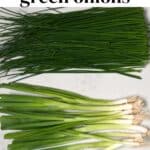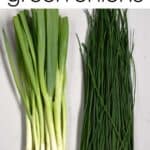Chives Vs Green Onions: What’s the Difference?
This post may contain affiliate links. Please read our disclosure policy.
Chives vs green onions vs scallions: what’s the difference? How to use them? Can you use them interchangeably? It’s all covered here!
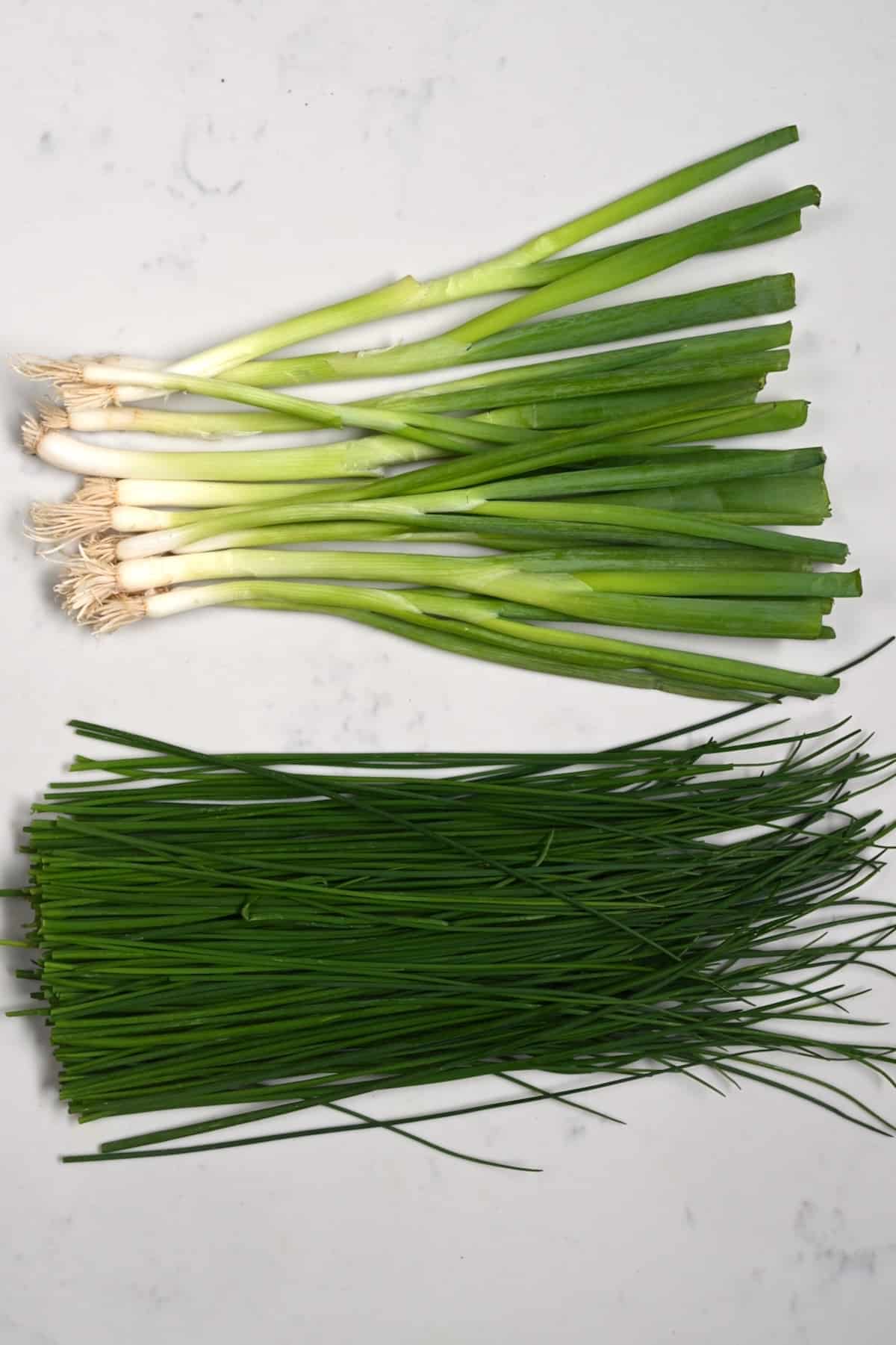
Chives and green onions are often confused for one another but aren’t the same. Within this post, I’ll be taking you through what they are, how to differentiate scallions vs green onions vs chives by look, and the overall differences between chives and green onions. Also, I’ve inlcuded top recommendations on how to use each in your kitchen!
Want to save this recipe?
What Are Green Onions?
Firstly, scallions and green onions (allium fistulosum) are actually the same thing and are considered a vegetable. The names refer to immature onions (from several varieties but also “bunching onions” that never form bulbs).
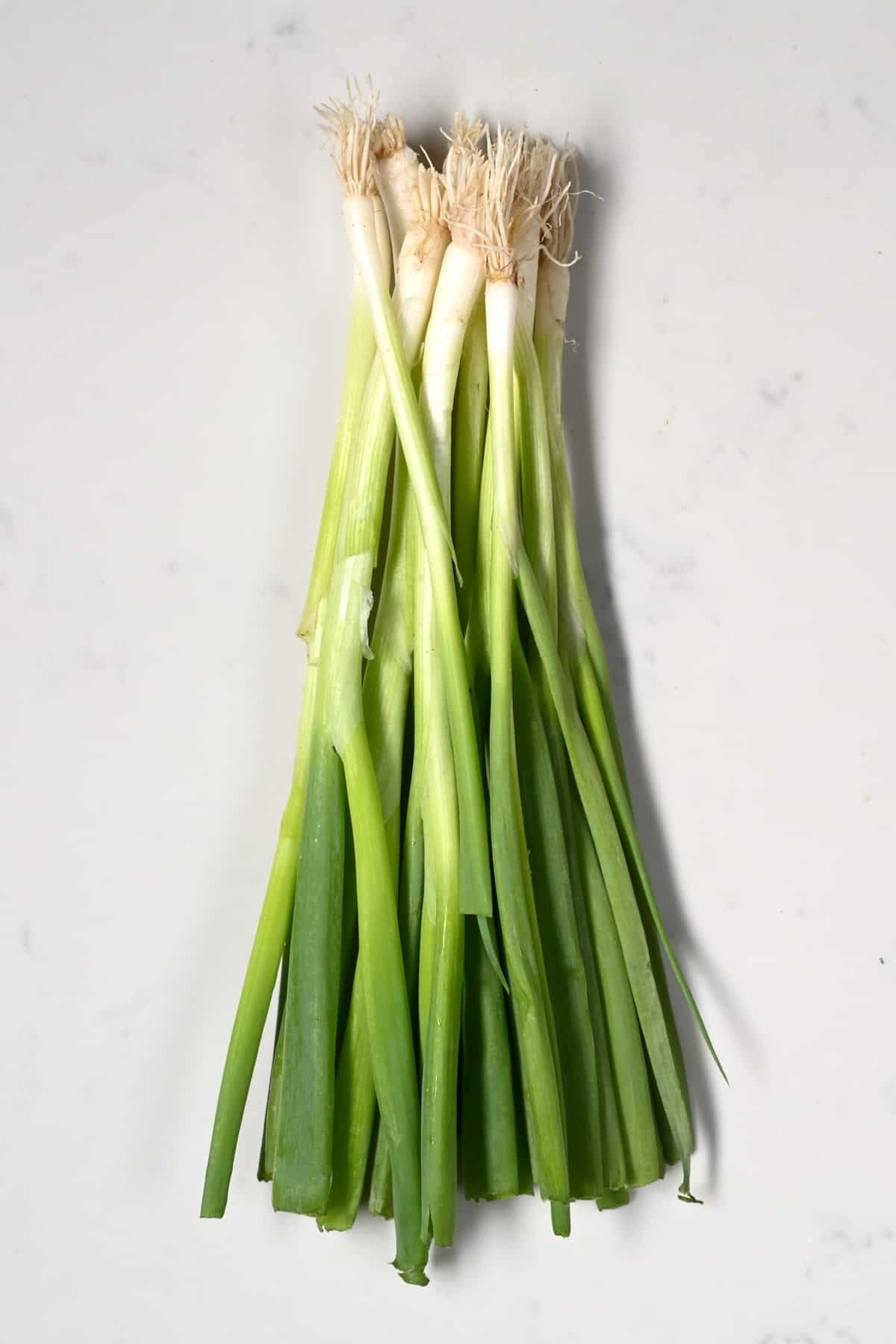
They have narrow white bulbs and roots at the bottom with long, flat, hollow leaves. Plus, they have a mild oniony flavor in the long green stems. It becomes more robust and oniony the closer to the roots you go.
In comparison, spring onions are left to grow for longer and look similar. But they have rounded, small white bulbs at their base with a more intense flavor than scallions. All varieties are great for adding mild onion flavor to raw and cooked recipes.
What Are Chives?
Chives (scientific name allium schoenoprasum) are a herb from flowering plants within the allium family. They have light purple flowers and dark green stalks.
The stalks are what we eat. They are long, thin, and look a little like hollow blades of grass. Plus they have a very mild onion flavor and delicate texture.
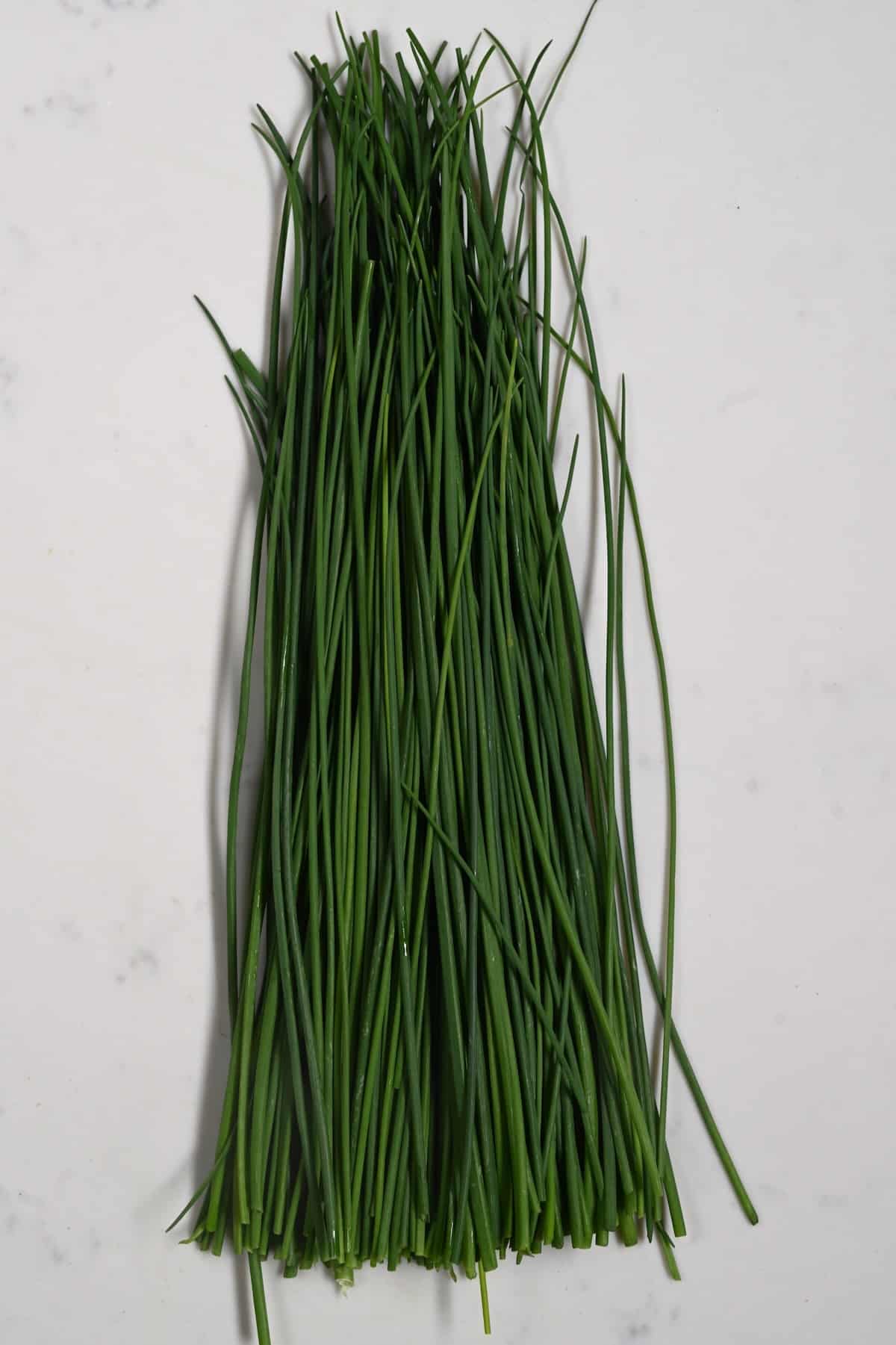
There are several types – including onion chives, garlic chives, and Siberian chives. But there are only subtle differences between them, and they are all used similarly. Because they’re so delicate, they work particularly well as a garnish and in raw salads, sauces, etc.
What’s The Difference Between Chives and Green Onions?
Both chives and green onions are part of the allium genus family (along with shallots, garlic, and leeks) and are specifically from the allium cepa species of onions. However, there are a few key differences. So what are chives vs green onions?
- Appearance: Chives are thinner and more delicate, with a richer green color. Scallions have a white root that gradually darkens to a deep green up to the leaves.
- Texture: Chives are more tender and delicate. Scallions are more crunchy in the green parts, and especially in the onion-like white bulb.
- Flavor: Both have a mild onion flavor, but chives are milder, more grassy, and considered a herb. Whereas green onions have a more robust oniony flavor the closer to the white root you get. Plus, they are considered a vegetable.
- Uses: Chives’ delicateness makes them great for being eaten raw or only briefly cooked, and used as a herb. In comparison, green onions are slightly hardier. They can be enjoyed raw or cooked within soups and stir-fries and are used as a vegetable. The white part cooks similarly to white and yellow onion.
So, are green onions and chives the same? Nope!
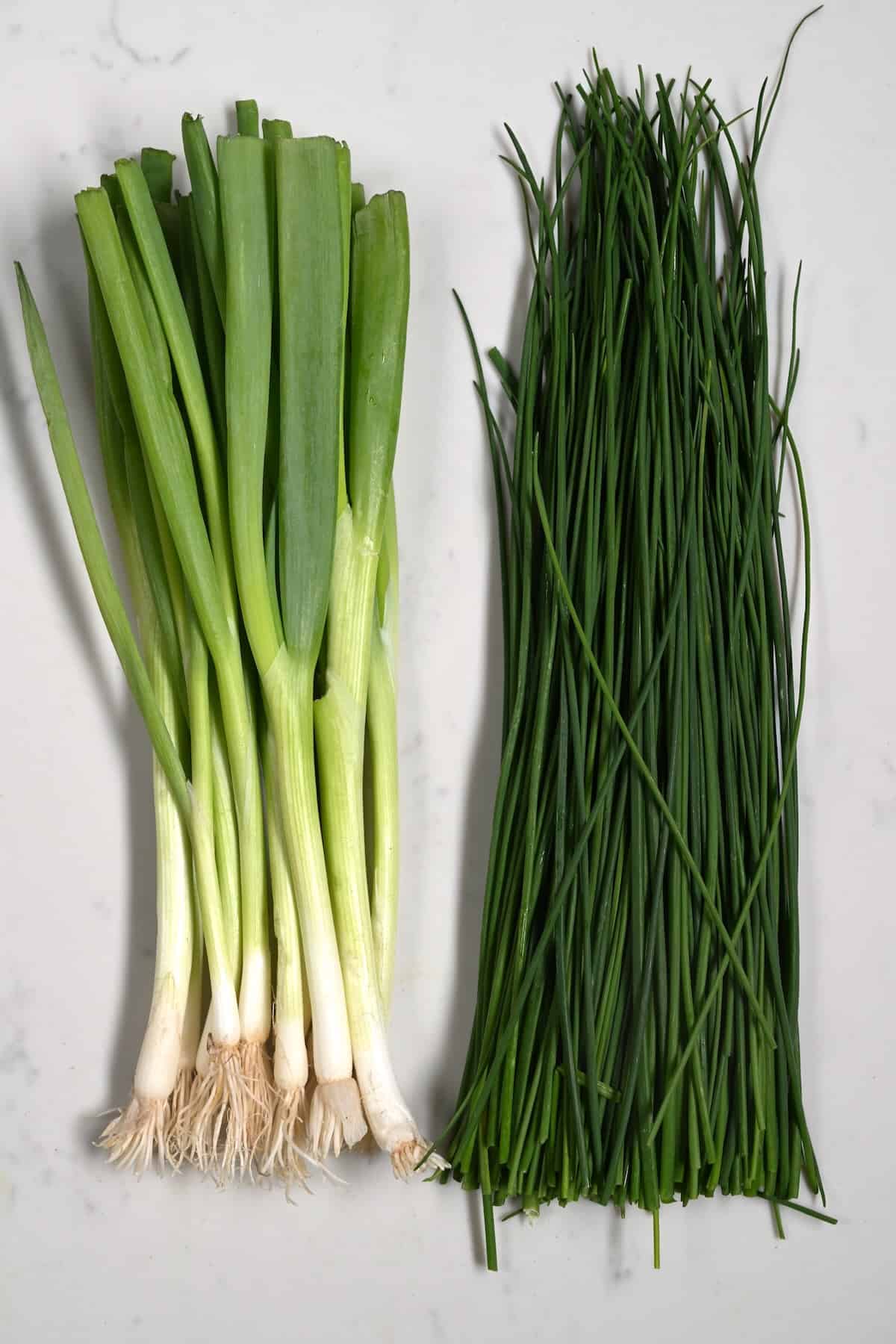
Comparing Chives vs Scallions Nutritionally
They contain similar calories (around 30kcal per 100 grams), fiber, and amounts of several micronutrients, like potassium and vitamin K. However, chives have slightly more calcium, almost double the protein, over 3x the fat (while still minimal amounts), almost double the folate, triple the vitamin C, and over quadruple the vitamin A.
Recipes With Chives
Because of their delicate texture, it’s best to use chives as a garnish or in raw recipes, like sauces, dressings, and dips. They pair particularly well with eggs, potatoes, and seafood.
- Quick Gyoza Sauce
- Over Baked Potatoes (with sour cream)
- Mashed potato
- Over an omelette
- To make herby compound butter
- Make chive cream cheese
Finely chop or blend them to help release the onion flavor. It helps to cut them with scissors to avoid bruising.
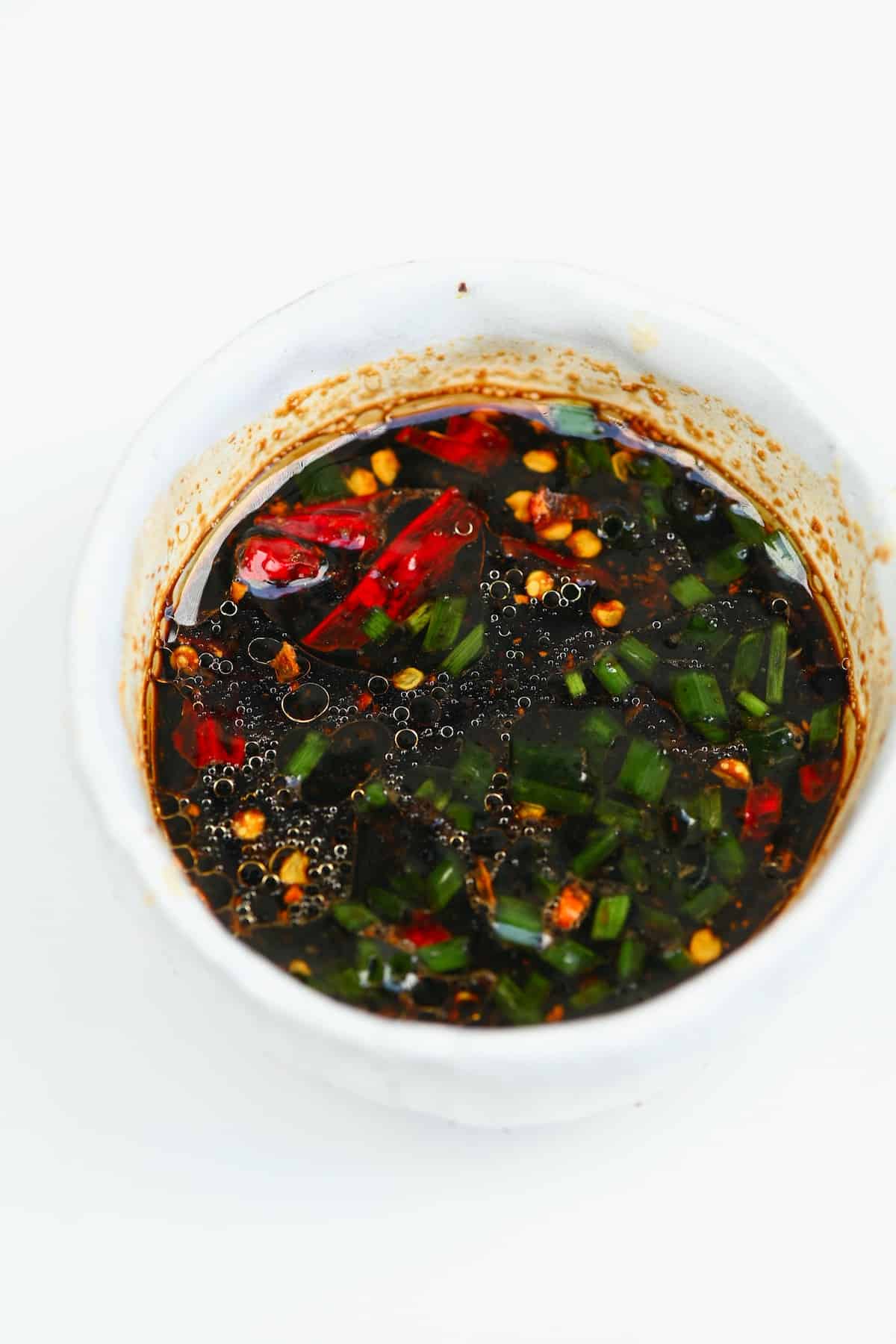
Recipes With Green Onions
Because of their sturdier texture and white base, you can enjoy green onions raw or cooked. The green leaves work best as a garnish and with minimal cooking. Meanwhile, the white roots cook similarly to white and yellow onions, perfect for soups and stir-fries.
Green onions are a staple of Asian cooking and work wonderfully in recipes like homemade ramen, Asian Salad, Garlic Fried Rice, and Garlic Chili Oil Noodles. However, you might also enjoy green onion recipes like:
- Marinades,
- Scrambled eggs,
- Scallion pancakes,
- Egg Salad Sandwich,
- Potato Roti,
- Over Mexican dishes, like Texas caviar and burrito bowls.
Note both chives and scallions taste delicious when baked into bread, dinner rolls, savory muffins, scones, etc.
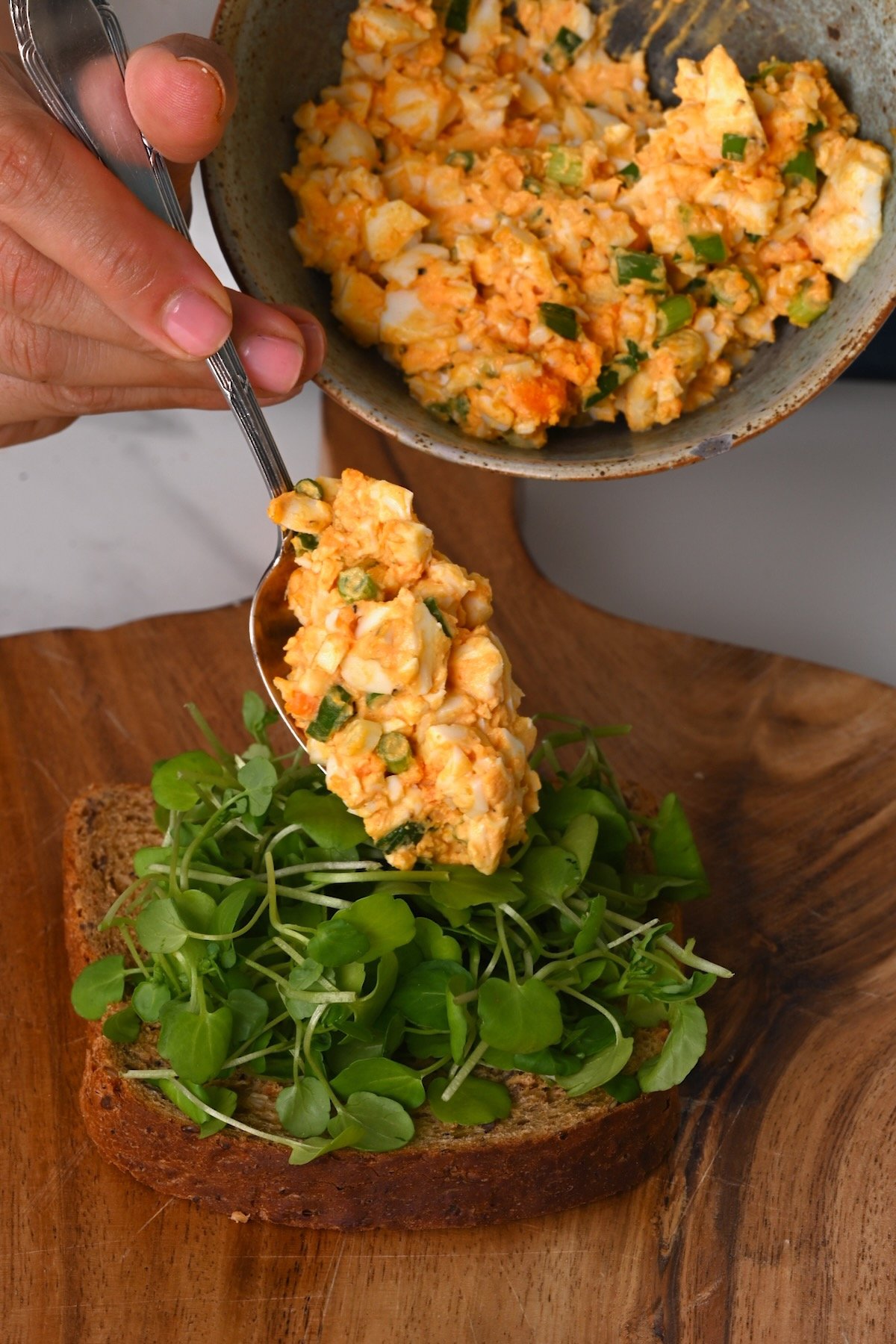
Can You Substitute Green Onions for Chives?
Generally, when considering chives vs green onions for culinary uses, chives are best added right at the end of a cooking process or used as a garnish (they lose more flavor when cooked). Whereas green onions will work best where more heat is used.
However, the green parts of both ingredients have a similar enough flavor that they can be used interchangeably in many recipes to add a burst of fresh oniony flavor.
As chives have a milder flavor, you’ll generally need more of them. Note one medium green onion equals around 2-3 tablespoons of finely chopped chives.
How To Store Chives and Green Onions?
If you purchase them from a grocery store, it’s best to wrap them in moist paper towel in a Ziplock bag or airtight container and store them in a crisper drawer in your fridge.
Chives are best used within 5-7 days. Green onions will last longer and can stay fresh for up to 2 weeks, though you could also store them diced for several days.
And if you’ve ended up with too much of either and no way to use them, you can dehydrate the green onions and chives! Plus, you can use the leftover scallion roots to regrow green onions at home!
More How To’s
- Cut An Onion
- Crush, Chop, & Mince Garlic
- Cut and Cook Leeks
- Peel, Cut, Grate, & Mince Ginger
- Cook Fennel (Multiple Methods)
- Cook Asparagus to Perfection
- Parsley vs Cilantro
Let me know your thoughts and questions in the comments below. Also, I’d love to see your recipe recreations – tag me on Instagram @Alphafoodie!

